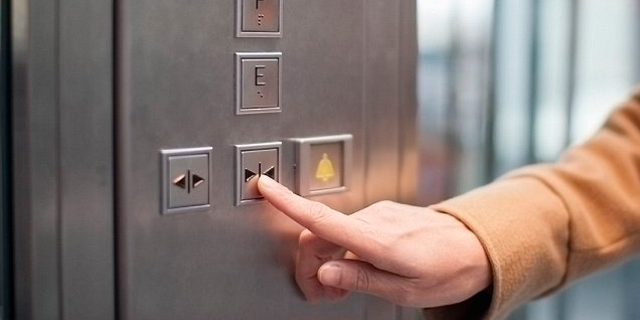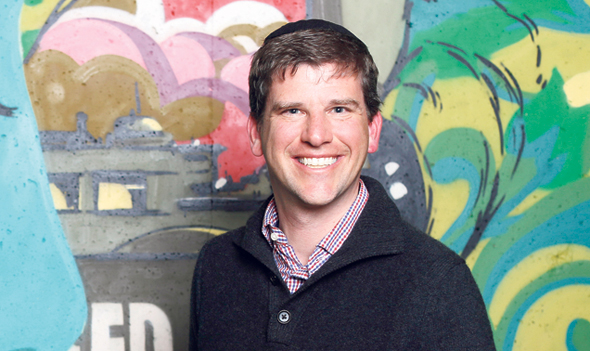
Opinion
Residential Elevators and Garbage Chutes Are Ripe For Urban Innovation
Venture capitalist Michael Eisenberg thinks elevators are the next frontier of mobility. Part 2
Elevators are ripe for innovation. As I detailed in a previous article, long planning and approval cycles that render buildings outdated by the time they are completed, in addition to more densely-populated workplaces, mean that in-building mobility has become a challenge. In this article, I will look at some of the challenges and opportunities of what I'm calling the “Elevator Problem” in urban residential buildings. I will start by looking at the elevating, or more accurately, levitating solution everyone is talking about: drones.
For daily updates, subscribe to our newsletter by clicking here.
Alphabet subsidiary Wing is working on drone and small airplane package delivery, as is Amazon. This is because current land-based last mile delivery is costly and cumbersome.
These companies are focused on suburban customers because you can’t drop drones in urban environments for safety reasons and because GPS is simply not that accurate in dense residential areas. Moreover, the odds that a drone can safely and accurately drop down to the 38th floor, open your window and drop your milk or sunglasses on your desk, is about as likely over the next decades as teleporting. We are at the nexus of a confluence of consumer expectations for fast delivery (one hour today and one minute tomorrow), technology (GPS, Logistics, and cost curve) and some measure of regulation. Here is a succinct problem statement: most people live in cities and more are moving there. Most economic activity and many high-value customers live in cities. Ecommerce and one-hour deliveries are here to stay. Drones are not a solution for urban delivery. Ergo, we need to solve the last 50 feet and 50 floors of delivery. Simply put, elevators do not serve customers today. Residential buildings today do not serve the residents living in our new ecommerce, micro-mobility society. That needs to change. We still have mailboxes in the bottom of residential buildings but almost nobody sends envelopes with stamps and paper letters. Packages from Amazon are swamping the doormen, crowding mail rooms and apartment building lobbies and in many cases, just sitting at the door. As more consumers order their milk and eggs for one-hour delivery from Amazon or Fresh Direct, branded refrigerators are popping up in buildings. If your building does not have a freezer or refrigerator from Amazon or Fresh Direct in NYC, along with your eggs and milk, you receive a plastic baggie of melted ice. We can only hope that most people go on to recycle those wet cardboard boxes. Packages are the most visible problem because everyone’s new personal mobility device, their bike and scooters, are now crowding their personal apartments. Buildings were not built with bike and scooter rooms, nor with easy access to the road and charging ports. Following my last post, I was brainstorming with Ron Gura, senior vice president of Product at WeWork, who has spent a lot of time thinking about the "last 50 floors” of Mobility. I thought it might be useful to lay out a few ideas so that entrepreneurs can start brainstorming. Better Utilization: can you plan deliveries for off hours? Can you tell your supplier what you need now and what can wait? Amazon Prime’s No-Rush shipping is a great example of the economics of patience. If you can wait for your delivery, Amazon will incentivize you. This requires data both on elevators and the supply chain. If you could know which hours elevators carry the most people, you could figure out when not to deliver packages and when not to put them in the elevators. You could also include coupons for things people might use when they wait. Did you order something that we know you will wait 4 hours for? Maybe Amazon can give you a coupon for a coffee or cocktail to cool your heels in front of a Netflix movie or a kindle book? This all still does not solve the problem of how to get the stuff into your apartment without giving Amazon your key, but it is a beginning and may unclog the daily box pile in the building’s lobby. Ctrl-Z : Ron pointed out that most elevators don’t have an undo button. Makes you wonder how many minutes could be saved by elevators not stopping at floors by accident or not stopping on the way up or down when the elevator is full. Just an undo button and some new sensors and logic (maybe even face recognition) could shave valuable minutes and seconds of the elevator ride. At hundreds or thousands of rides a day, that would amount to a lot. It’s the stairs, stupid : in Manhattan, most buildings with elevators are six stories high. That's not that high. Can we build robots that climb the stairs with our packages and scooters and bring them to us? The problem in large buildings is that the stairs are rarely open since they pose some sort of security concern that is beyond my comprehension. If we can get this robot or hydraulic lift going, maybe we can even make buildings and elevators more hospitable to people with mobility challenges or in wheelchairs? The Back Door: there are garbage chutes in many buildings. Can we repurpose them as package elevators? There is also probably some spare space behind the walls. Can we build new ones? Maybe even smart ones that take packages one way and garbage another way but are still sanitary? Can we create closets and refrigerators with backdoors into the guts of the building? Could your laundry and Amazon order go straight up a retrofitted garbage chute straight into your fridge through a trapdoor in the wall and a backdoor into your refrigerator? I wonder what this would do to customer expectations. Raining outside? Let me order an umbrella from the basement mini-robotic supermarket!Related stories
Another interesting economic view is that today landlords rent real estate but turn over a huge amount of economics to Amazon and Fresh Direct. Can the landlord own the last 50 feet and 50 floors and charge a toll? I keep wondering whether hotels might be the best place to start with some of these ideas. Does room service need to come up with a human in the main elevator? Wouldn’t a hotel want to capture extra dollars with a scooter room?
Feel free to make me an elevator pitch if you find this interesting and a significant challenge. Michael Eisenberg is a co-founder of Tel Aviv based Aleph Venture Capital. Eisenberg has been working in venture capital for over twenty years. He sits at the boards of auto tech company Nexar Inc. and insurance startup Lemonade Inc.
No Comments Add Comment